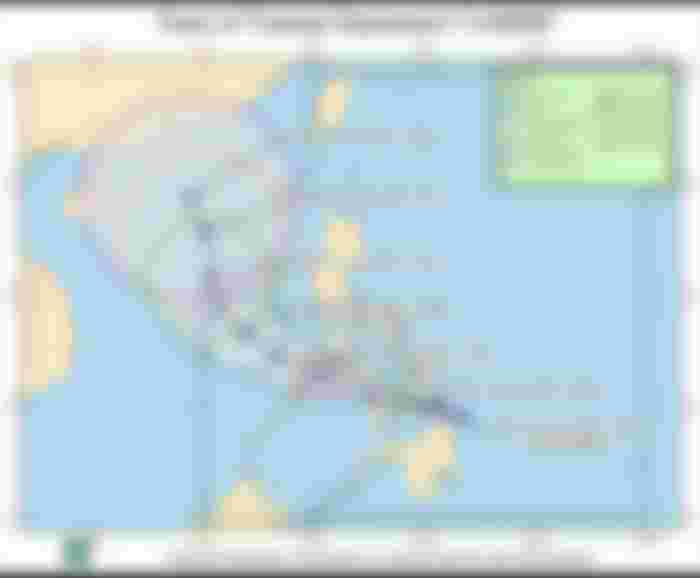Working as a staff of the Local Disaster Risk Reduction and Management Office makes the natural hazards specifically the typhoon, a big part of my life, sounds intriguing right? It is part of my job description to help plan, prepare, mitigate and rehabilitate the effects of a natural hazard that would hit our island.
Typhoon is the number 1 threat to our municipality, most especially during the last quarter of the year.
So in this article, I would share with you what I do during these times.
Forecast
As LDRRM Assistant, I make sure to check the weather forecast of PAG-ASA always most especially if there is a Low-Pressure Area (LPA). By then, I would know its track and if it can develop into Tropical Depression or Severe Tropical Storm.
If the forecast says that our island is under any Tropical Cyclone Warning Signal (TCWS), I would directly go to the office even though it's the weekend because I need to prepare things for the LDRRM Council’s Pre-Disaster Risk Assessment meeting.

I would print the attendance sheet and the PDRA handouts for the council members. Then I would prepare a PowerPoint presentation for my boss, it mainly is about the weather forecast, the Typhoon’s track and all the information needed.

Pre-Disaster Risk Assessment
PDRA would commence spearheaded by our municipal mayor which is the LDRRM Council chairman. My boss would present all the information about the typhoon (its current location, speed, gustiness, track, and all the places that would be affected).
The council then would analyze the data and would assess if our municipality is ready for the possible effects of the typhoon on the island. They would plan for the preparation in case the danger heightened. Preparation includes alerting the constituents of the impending danger through the bandilyo system, management of the evacuation centers, packing of relief goods, and preemptive evacuation for those living in low-lying and coastal areas. Furthermore, they would determine the logistics that we have so that they know what to expect.

Emergency Operation Center
After the meeting, I would head back straight to the office and would open our Emergency Operation Center. I would keep the log of those present partner agencies just like Philippine National Police, Philippine CoastGuard, Bureau of Fire Protection, Municipal Social Welfare and Development personnel, Engineering, and Rural Health Personnel and our volunteers too.
I would call the barangay secretary from time to time to ask for the situational report, I would summarize and give it to my boss so that she can send a copy of the situational report islandwide to the Provincial DRRM and Regional Office of National Defense.
Disaster Response
At the onset of the disaster and there is a need to do a response, I help my boss in the deployment of our response teams. Sometimes, I go with the response team to affected areas too. We mostly do clearing operations because of fallen trees and rocks that are blocking the road for its hindrances in the delivery of services to every barangay. We deploy teams that would help the fishermen to secure their boats too since we all know that waves could get too large and wash away even anchored boats during typhoons. Furthermore, we must oversee the relief distribution and evacuation operation.
Rapid Damage Assessment and Needs Analysis
During the onset of disaster, the barangay officials would assess the extent of damage incurred to their barangay and would determine the logistics that they need. Upon completion, they would send their partial report to me, I would make a report for it and send it to my boss. I make sure to compile those reports because we need them as a basis of the Post Disaster Needs Assessment.
Post Disaster Needs Assessment
After the typhoon, the assessment team including but not limited to the Engineering Office, Department of Agriculture Office, Tourism Office, Municipal Planning and Development Office, LDRRM Office would go to ground zero to assess all the reports including the RDANA. They would then recommend what to do, whether to release cash assistance, proclaim a state of calamity or realign the budget to rehab the damaged properties. I would then make a report from all those recommendations and present it to the council.
This is mainly my routine every time a typhoon would hit our island. I’ve been doing this for 4 years and 11 months now. Sometimes, I cannot help but envy those who are at home during a typhoon because they get to be with their families amidst the storm but a part of me is happy that I get to serve many people during those hard times. With that in mind, I would smile and thank God for the job that He had given me.
Author's Note
I have come to love my job after all these years. The joy of serving people is what keeps me going. It may not be easy but being a public servant is a calling.
It may not be easy but being a public servant is a calling.
Hope that you have enjoyed this one😊. Thank you for taking the time to read.
semft 22:37 October 4, 2021



Wow! Must be a difficult job especially when there are typhoons coming. Great job though.